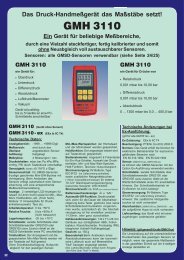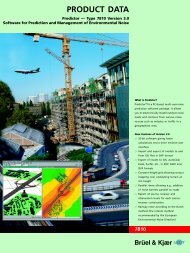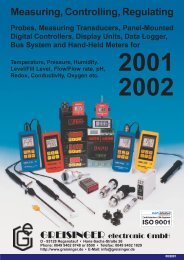[2] <strong>Design</strong><strong>in</strong>g for <strong>Reliability</strong>controlled precisely at the particle submicron level.Of the factors listed <strong>in</strong> Table 2.2, those related to the wafer (silicon substrate) are most fundamental tothe product. Factors such as crystal defects <strong>in</strong> the silicon, resistivity dispersion and contam<strong>in</strong>ationsurface flaws can directly affect product characteristics.The assembly process beg<strong>in</strong>s with die separation. In this process the most critical operations are diebond<strong>in</strong>g, wire bond<strong>in</strong>g and the seal<strong>in</strong>g or mold<strong>in</strong>g processes. Die bond<strong>in</strong>g and wire bond<strong>in</strong>g are theprocesses that mount the die and bond wires which are used to connect the external package leads tothe chip. S<strong>in</strong>ce junctions are formed between different materials, changes <strong>in</strong> temperature and otherphysical forces (such as vibration, shock and acceleration) can cause the die to crack or cause openfaults, either of which can be catastrophic. In the case of res<strong>in</strong> mold<strong>in</strong>g, impurities <strong>in</strong> the mold<strong>in</strong>gres<strong>in</strong> (such as sodium, potassium or chlor<strong>in</strong>e), absorption of moisture, thermal expansion and moldshr<strong>in</strong>kage must be taken <strong>in</strong>to account. These can result <strong>in</strong> corrosion failure, improper characteristics,breakage of bond<strong>in</strong>g wires and die cracks. In the case of hermetic seal<strong>in</strong>g, checks must be carried outfor moisture and other impurities <strong>in</strong> the seal<strong>in</strong>g gas and the presence of conductive material. Thesecan cl<strong>in</strong>g to the die surface and cause <strong>in</strong>creased leakage current or improper operation.2.3 Operat<strong>in</strong>g Environment2.3.1 Environmental ConditionsInternal product factors affect<strong>in</strong>g reliability can be accelerated by external stresses, such as theoperat<strong>in</strong>g environment. Typical external factors are listed <strong>in</strong> Table 2.3.Some factors operate <strong>in</strong>dependently. Generally, however, external factors affect<strong>in</strong>g reliability are<strong>in</strong>terrelated. For example, corrosion breakage is caused by a comb<strong>in</strong>ation of temperature andhumidity.Stresses are classified <strong>in</strong>to those deriv<strong>in</strong>g from the natural environment and those related to humanfactors. Stresses deriv<strong>in</strong>g from the natural environment <strong>in</strong>clude temperature, humidity, atmosphericpressure, sal<strong>in</strong>ity, overvoltage surges due to lightn<strong>in</strong>g and cosmic rays. Temperature and humidity arethe most significant factors.In general, a rise <strong>in</strong> temperature speeds up chemical reactions and accelerates changes <strong>in</strong> materials.This <strong>in</strong> turn accelerates failure mechanisms. Therefore, temperature must be monitored carefully.When the product is operat<strong>in</strong>g, <strong>in</strong>crease <strong>in</strong> temperature due to power dissipation by the device mustalso be taken <strong>in</strong>to account.Change <strong>in</strong> temperature stresses the junction between two different materials when the materialsexpand at different rates. If this occurs repeatedly, material fatigue <strong>in</strong> the junction can damage thehermetic seal and degrade die bond adhesion, caus<strong>in</strong>g bond<strong>in</strong>g wire opens. If the device is connectedimproperly, heat from the equipment or the device can accelerate the temperature change, thusaccelerat<strong>in</strong>g the fatigu<strong>in</strong>g process.Humidity-<strong>in</strong>duced condensation <strong>in</strong>creases the conductivity of material surfaces. This <strong>in</strong>creasesleakage current <strong>in</strong> a device, which <strong>in</strong> turn affects the characteristics and functions of the device.Humidity can also accelerate chemical and electrochemical reactions which cause metal corrosion.Res<strong>in</strong>-encapsulated devices are especially susceptible to humidity. However, due to improvements <strong>in</strong>res<strong>in</strong> materials, res<strong>in</strong> mold<strong>in</strong>g is now by no means <strong>in</strong>ferior to hermetic seal<strong>in</strong>g.2-6
[2] <strong>Design</strong><strong>in</strong>g for <strong>Reliability</strong>Atmospheric pressure affects devices used at high altitudes, e.g. <strong>in</strong> mounta<strong>in</strong>ous areas or <strong>in</strong> aerospaceapplications. Low atmospheric pressure <strong>in</strong>duces a corona discharge between electrodes and reducesthe package’s heat radiation rate. This results <strong>in</strong> a temperature rise <strong>in</strong> the die.Sal<strong>in</strong>ity is a problem for devices used <strong>in</strong> coastal areas, ships and other mar<strong>in</strong>e applications. Saltadher<strong>in</strong>g to device surfaces <strong>in</strong>creases the chance of metal corrosion damage and dim<strong>in</strong>ishes the<strong>in</strong>sulation between electrodes.Lightn<strong>in</strong>g can affect devices <strong>in</strong> outdoor applications, such as traffic signal<strong>in</strong>g equipment. Specialprotective measures should be taken to <strong>in</strong>crease the ability of devices to withstand voltage surgescaused by lightn<strong>in</strong>g.Other natural environmental factors <strong>in</strong>clude soft errors due to alpha rays from radioactive isotopes <strong>in</strong>packag<strong>in</strong>g materials (this normally affects high-<strong>in</strong>tegration LSI memory), and damage or malfunctiondue to radiation <strong>in</strong>herent <strong>in</strong> certa<strong>in</strong> applications, such as nuclear power and aerospace.Human factors affect<strong>in</strong>g reliability <strong>in</strong>clude the subjection of devices to vibration dur<strong>in</strong>g transport and<strong>in</strong> vehicular applications (Table 2.4); shock dur<strong>in</strong>g handl<strong>in</strong>g by <strong>in</strong>dustrial robots or caused by dropp<strong>in</strong>g,impact, etc. dur<strong>in</strong>g device operation (Table 2.5); overheat<strong>in</strong>g dur<strong>in</strong>g pr<strong>in</strong>ted circuit board solder<strong>in</strong>g;voltage surges dur<strong>in</strong>g the open<strong>in</strong>g and clos<strong>in</strong>g of switches; noise from poor relay contacts or nearbyelectric motors; electrostatic problems <strong>in</strong> low humidity environments; malfunctions due to strongelectromagnetic waves from a nearby transmitter or oscillator; and ultrasonic vibration dur<strong>in</strong>gpr<strong>in</strong>ted circuit board clean<strong>in</strong>g after solder<strong>in</strong>g.2.3.2 Operat<strong>in</strong>g ConditionsIn addition to physically <strong>in</strong>duced stress caused by the natural environment and human error,operat<strong>in</strong>g conditions imposed by the equipment or system <strong>in</strong> which a semiconductor is used can alsoaffect reliability. Examples are device breakdown due to operation at higher-than-rated-for voltages;malfunction due to operation at lower-than-rated-for voltages; destruction due to excessive loads; andmalfunction or destruction when device tim<strong>in</strong>g specifications are not adhered to.2-7





